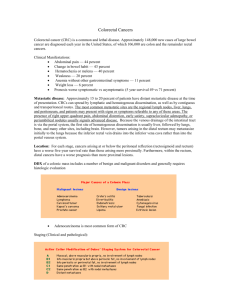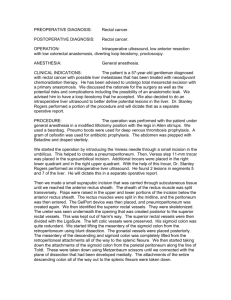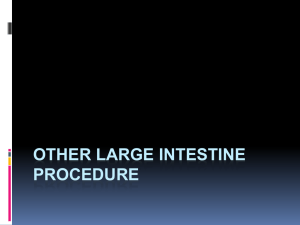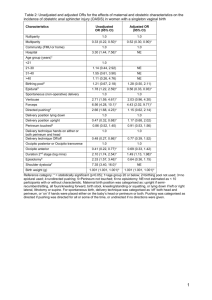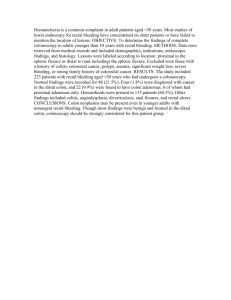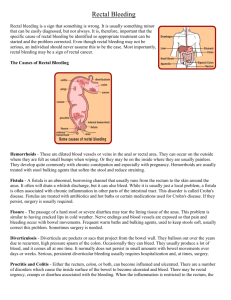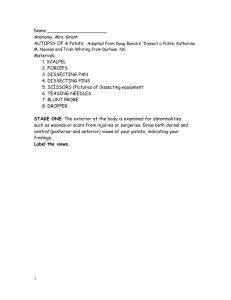Abdominalperineal Resection
advertisement
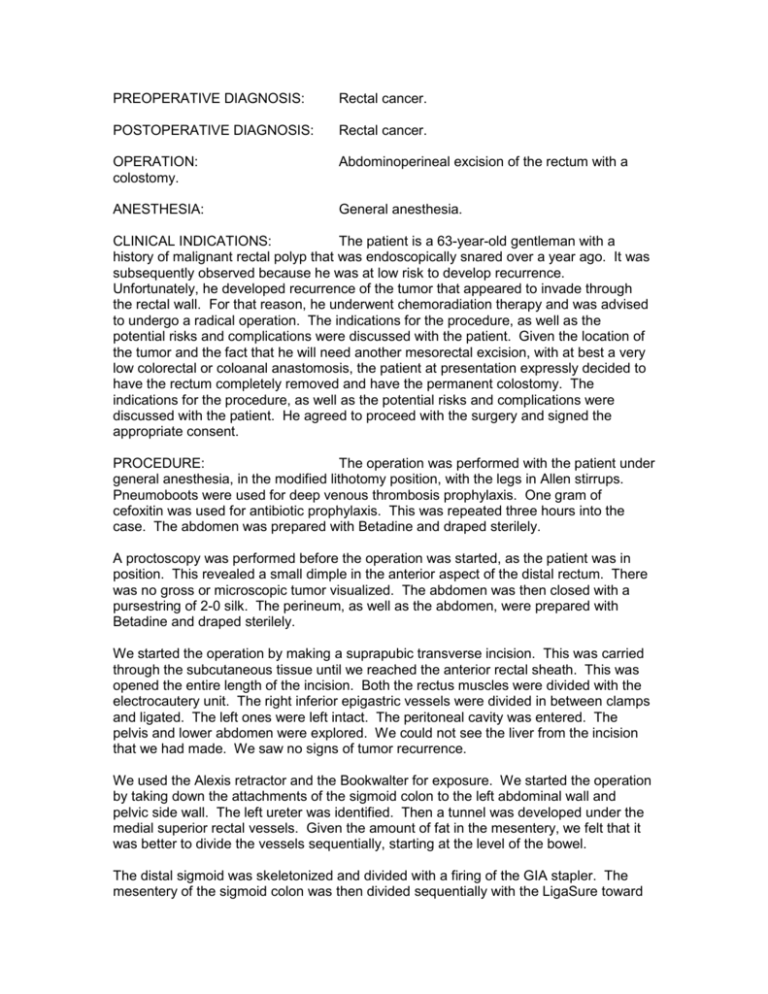
PREOPERATIVE DIAGNOSIS: Rectal cancer. POSTOPERATIVE DIAGNOSIS: Rectal cancer. OPERATION: colostomy. Abdominoperineal excision of the rectum with a ANESTHESIA: General anesthesia. CLINICAL INDICATIONS: The patient is a 63-year-old gentleman with a history of malignant rectal polyp that was endoscopically snared over a year ago. It was subsequently observed because he was at low risk to develop recurrence. Unfortunately, he developed recurrence of the tumor that appeared to invade through the rectal wall. For that reason, he underwent chemoradiation therapy and was advised to undergo a radical operation. The indications for the procedure, as well as the potential risks and complications were discussed with the patient. Given the location of the tumor and the fact that he will need another mesorectal excision, with at best a very low colorectal or coloanal anastomosis, the patient at presentation expressly decided to have the rectum completely removed and have the permanent colostomy. The indications for the procedure, as well as the potential risks and complications were discussed with the patient. He agreed to proceed with the surgery and signed the appropriate consent. PROCEDURE: The operation was performed with the patient under general anesthesia, in the modified lithotomy position, with the legs in Allen stirrups. Pneumoboots were used for deep venous thrombosis prophylaxis. One gram of cefoxitin was used for antibiotic prophylaxis. This was repeated three hours into the case. The abdomen was prepared with Betadine and draped sterilely. A proctoscopy was performed before the operation was started, as the patient was in position. This revealed a small dimple in the anterior aspect of the distal rectum. There was no gross or microscopic tumor visualized. The abdomen was then closed with a pursestring of 2-0 silk. The perineum, as well as the abdomen, were prepared with Betadine and draped sterilely. We started the operation by making a suprapubic transverse incision. This was carried through the subcutaneous tissue until we reached the anterior rectal sheath. This was opened the entire length of the incision. Both the rectus muscles were divided with the electrocautery unit. The right inferior epigastric vessels were divided in between clamps and ligated. The left ones were left intact. The peritoneal cavity was entered. The pelvis and lower abdomen were explored. We could not see the liver from the incision that we had made. We saw no signs of tumor recurrence. We used the Alexis retractor and the Bookwalter for exposure. We started the operation by taking down the attachments of the sigmoid colon to the left abdominal wall and pelvic side wall. The left ureter was identified. Then a tunnel was developed under the medial superior rectal vessels. Given the amount of fat in the mesentery, we felt that it was better to divide the vessels sequentially, starting at the level of the bowel. The distal sigmoid was skeletonized and divided with a firing of the GIA stapler. The mesentery of the sigmoid colon was then divided sequentially with the LigaSure toward the superior rectal vessels. These were finally skeletonized and divided also with the LigaSure. The colon was then packed in the upper abdomen. We then started the proctectomy by opening the areolar space behind the fascia propria of the rectum, at the level of the promontory. The peritoneum on both sides of the rectum was opened with the electrocautery unit and the rectum was lifted from the concavity of the sacrum using the electrocautery unit. The peritoneum was further divided on both sides of the rectum until we reached the cul-de-sac. The rectum was lifted from the hole of the sacrum using the electrocautery unit all the way down to Waldeyer fascia. The lateral stalks were divided similarly with the electrocautery unit. Anteriorly, we opened the peritoneum in the cul-de-sac and then continued the dissection in this plane using the electrocautery unit. We were close to the seminal vesicles, particularly on the right side. The lateral stalks were further divided all the way down to the pelvic floor. Anteriorly, the dissection was carried as far as it was feasible from the pelvis. At this point, I went to the perineum and exposed the perineal area with the Lone Star retractor. I made an elliptical incision around the anus. This incision was carried through the subcutaneous tissue until I found the distal rectal folds. Posteriorly, the dissection was carried all the way to the anococcygeal ligament. This was divided and in this way we entered the pelvis from the perineum. Then I divided the levators on both sides. I continued the dissection laterally and anteriorly, separating the rectum from the membranous and prostatic urethra. Eventually, the puborectalis muscles were cut on both sides and the rectum was completely detached from the prostate. The specimen was delivered from the perineum and sent to Pathology. They were opened and returned. The tumor had a complete clinical response. The margins outside the tumor were inked by the pathologist. There were no other abnormalities in the specimen. The pelvis and the perineum were then extensively irrigated with saline. Hemostasis was revised in the posterior capsule of the prostate. The perineum was closed in three layers with interrupted 2-0 Dexon stitches. The skin was approximated with interrupted 2-0 nylon stitches. I then changed gowns and gloves and went to the perineum. We revised hemostasis in the pelvis. There were in bleeding points in the presacral area, at the level of the insertion of the Waldeyer fascia. This was electrocoagulated with the electrocautery unit. At the end, hemostasis was felt to be adequate. A circular incision was made in the left side of the abdomen, at the site that had been previously marked for the colostomy. This incision went down through the subcutaneous tissues using the electrocautery unit until we reached the anterior rectus sheath. The anterior and posterior rectal sheath was opened in a cruciate fashion and divided. The colon was exteriorized through this opening, taking care not to twist the mesentery. A #10 Blake Jackson-Pratt drain was placed in the pelvis and brought through a ventral incision in the right lower quadrant. The peritoneum was closed with running 0 Dexon. The wound was irrigated with saline with antibiotics and it was then approximated with staples. The colostomy was then matured with interrupted 4-0 Dexon stitches. The estimated blood loss was approximately 750 ml. The patient tolerated the procedure well and was transferred to the postanesthesia care unit in stable condition. ASSISTANT SURGEON(S): Elizabeth Wick, MD If the assistant surgeon is other than a qualified resident, I certify that the services were medically necessary and there was no qualified resident available to perform the services.


